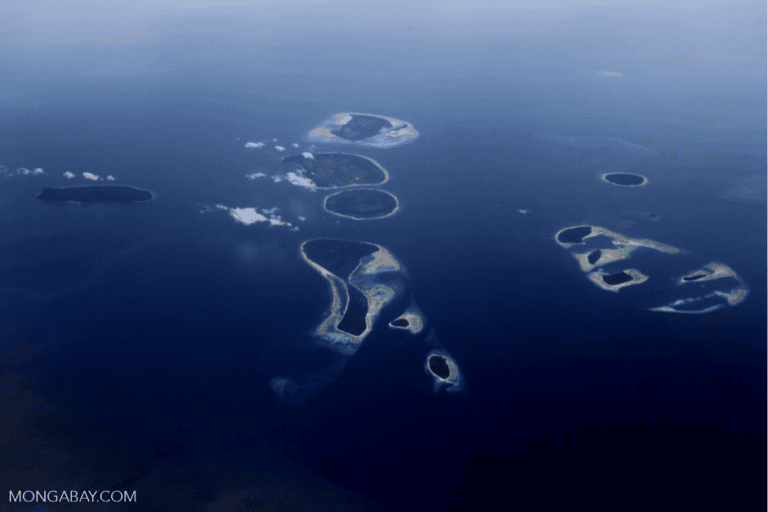- A new study has found that sea level rise may happen faster than current models project.
- The Intergovernmental Panel on Climate Change (IPCC) projects that the sea level will rise about a meter (39 inches) by the century’s end, but this study finds that estimate to be conservative.
- The results suggest that sea levels will rise about 25 centimeters (10 in) more per century if carbon emissions are not curbed and the Earth continues to heat up.
A new study has found that sea levels are rising faster than expected, which would put 40% of the world’s population living in coastal regions at elevated risk.
Published Feb. 2 in the European Geosciences Union journal Ocean Science, the study introduced a new method of quantifying sea level rise by comparing historical sea level data with the sea’s “sensitivity” to warming. What it ultimately found was that current estimates of sea level rise — including the Intergovernmental Panel on Climate Change’s (IPCC) projection that sea levels will rise by about a meter (39 inches) by the end of the century — were conservative.
So how much more is the sea expected to rise? Lead author Aslak Grinsted, associate professor at the University of Copenhagen’s Niels Bohr Institute, said he is hesitant to put forward a number since the study itself does not make a projection for the future.
“It’s not really like we make a correction and we don’t really give a number,” he told Mongabay in an interview. “But we say that it’s probably 25 centimeters [10 in] per century higher than what we thought. That’s the closest thing to a correction that we can get.”

The study also suggests that the world would need to emit 200 gigatons to 300 gigatons less of carbon dioxide, and cool the Earth by about 0.6° Celsius (1° Fahrenheit), for sea level rise to correlate with previous models, Grinsted said.
“The most unpredictable thing is human behavior, I think,” Grinsted said. “And then secondly what will happen to Antarctica.”
Another study recently identified that Antarctica’s Pine Island and Thwaites glaciers, whose melting has already contributed to 5% of global sea rise, could be on the verge of breaking apart, releasing even more water into the oceans and contributing to more sea level rise.
Grinsted and his co-author, Jens Christensen, said they hope their model can be used in future scientific research.
“It is crucial for our reliance on model-based climate predictions that they are able to reproduce the realised climate as realistically as possible,” Christensen, a professor at the Niels Bohr Institute, said in a statement. “We hope this new comparison metric will be adopted to as large extent as is possible and can become a tool we can apply in comparing different models.”
Benjamin Horton, a professor at Singapore’s Nanyang Technological University and director of the Earth Observatory of Singapore, who was not involved in the study, said this new research is important since computer models are not always accurate at predicting the future.
“The methodology suggests that there is a real risk, a plausible risk of very substantial sea level rise,” he told Mongabay in an email.

Horton recently co-authored another study that suggests that sea levels would rise higher than expected — if carbon emissions continued to rise as well. The study, which surveyed more than 100 international experts, found that sea levels would rise by 50 cm (20 in) by 2100 and 50 to 200 cm (20 to 79 in) by 2300 if global warming is limited to 2°C (3.6°F). But if carbon emissions aren’t curbed and the Earth warms by 4.5°C (8.1°F), sea levels could rise 60 to 130 cm (24 to 51 in) by 2100 and 170 to 560 cm (67 to 220 in) by 2300, the study suggests.
“But there are stark differences in the amount of sea-level rise experts project for low emissions compared to high emissions,” Horton said. “This provides a great deal of hope for the future, as well as a strong motivation to act now to avoid the more severe impacts of rising sea levels.”
Citations:
Grinsted, A., & Christensen, J. H. (2021). The transient sensitivity of sea level rise. Ocean Science, 17(1), 181-186. doi:10.5194/egusphere-egu2020-7084
Horton, B. P., Khan, N. S., Cahill, N., Lee, J. S., Shaw, T. A., Garner, A. J., … Rahmstorf, S. (2020). Estimating global mean sea-level rise and its uncertainties by 2100 and 2300 from expert assessment. npj Climate and Atmospheric Science, 3(1). doi:10.1038/s41612-020-0121-5
Lhermitte, S., Sun, S., Shuman, C., Wouters, B., Pattyn, F., Wuite, J., … Nagler, T. (2020). Damage accelerates ice shelf instability and mass loss in Amundsen Sea Embayment. Proceedings of the National Academy of Sciences, 117(40), 24735-24741. doi:10.1073/pnas.1912890117
Banner image caption: Melting sea ice. Image courtesy of European Geosciences Union (EGU).
FEEDBACK: Use this form to send a message to the author of this post. If you want to post a public comment, you can do that at the bottom of the page.
The Link LonkFebruary 02, 2021 at 11:13PM
https://ift.tt/3atdSgA
New study warns that sea levels will rise faster than expected - Mongabay.com
https://ift.tt/2CoSmg4
Sea
/cloudfront-us-east-2.images.arcpublishing.com/reuters/CZF6NULMVVMEXHOP7JK5BSPQUM.jpg)
No comments:
Post a Comment